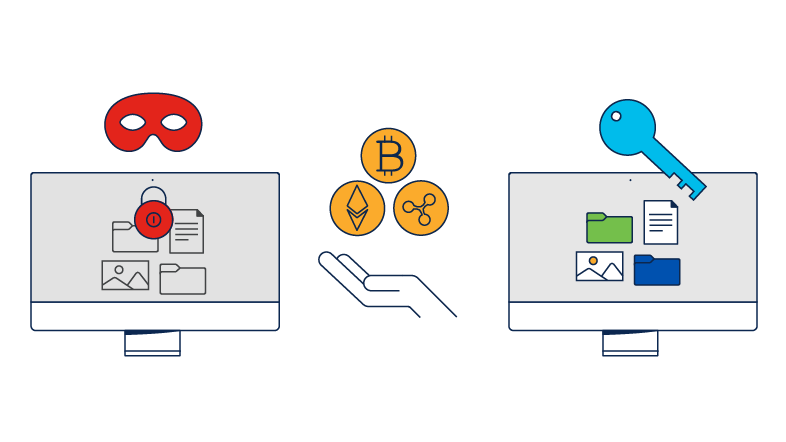How Should Companies Handle Ransomware?
Posted 09 Jan at 12:03 pm in Productivity
The Rising Tide of Ransomware

Understanding what ransomware is and preparing for such attacks is no longer optional but a critical necessity for all companies. In 2023 it is estimated that 73% of every business in the world was affected by ransomware attacks to some degree. In simple terms, a ransomware attack is when hackers take control of your computer, steal your data, and demand ransom (payment) to return the account, money, or data that they have captured. It’s a cybercrime that can cause significant problems for individuals and organizations.
Preparation:
- Antivirus Deployment: As per NIST guidelines, antivirus software is the first line of defense. It should be configured for automatic scans, especially for emails and removable media.
- Regular Updates: Keeping all systems patched with the latest security updates is crucial to close any vulnerabilities.
- Access Control: Limit the use of personal devices and applications on company networks, as advised by experts from Proven Data.
Detecting Ransomware
When ransomware breaches your defenses, early detection and prompt action can significantly reduce damage.
- Monitoring for Anomalies: Watch out for unusual system behavior, such as unexpected logins or modifications that impair system recovery.
- Isolation Tactics: Quickly isolate affected systems to prevent the malware from spreading further through the network.
- Identifying ‘Patient Zero’: Determine the infection’s source and shut it down immediately.
Communication: Reporting and Notification
Upon detection of an attack:
- Report to Authorities: Depending on the severity of your situation, immediately notify organizations like CISA, the FBI, or local law enforcement. Otherwise, you should immediately make this attack known to your IT provider.
- Stakeholder Engagement: Keep internal teams and external stakeholders informed about the attack’s status and steps being taken.
Containment and Recovery: Eradication and Rebuilding
Post-detection, focus shifts to containment and recovery:
- Network Disconnection: In some scenarios, it may be best to disconnect infected machines from the network to halt the spread.
- Backup Checks: Assess and secure your data backups. If intact, they can be pivotal in restoring systems.
- Rebuilding: In cases where backups are compromised, rebuilding might be necessary. Modern cloud solutions can expedite this process.
Reflection and Adaptation: Post-Incident Review
After navigating a ransomware crisis, it should be used as a point to learn and adapt from:
- Incident Analysis: Examine the attack’s cause and identify security gaps.
- Cybersecurity Training: Regular training for staff on cybersecurity best practices is a must.
- Security Protocol Updates: Revise and enhance security protocols to prevent future attacks.
Moving Forward
Ransomware attacks test a company’s resilience and preparedness. This guide outlines a multi-faceted approach to not only survive but also thrive in the face of such challenges. Remember, the key to navigating these treacherous attacks lies in preparation and rapid response.
To read more articles from Proper Sky, read here.



No Comments